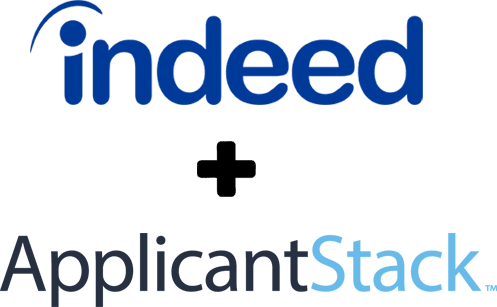Candidate screening is a fairly common strategy among organizations that are actively searching for candidates to fill open roles. It’s a bit like a pre-interview, before the actual interview and serves as a way for a hiring manager, recruiter or other HR personnel to briefly evaluate job applicants ahead of time to determine their suitability for the position they’ve applied for.
The process typically involves checking the applicant’s resume or CV against their job application. While this can happen without involving the candidate, a screening call held over the phone or a video call helps a recruiter gain a good sense of what a person is like, learn why they applied for the job and more.
Here, we’re talking about why screening is essential and strategies to help you improve your process from start to finish.
Why Candidate Screening Is a Hiring Must
While screening can technically mean internally reviewing resumes, cover letters and other application materials, lots of employers take the opportunity to conduct a screening assessment. The process gives each qualified candidate a fair shot at showcasing their best characteristics ahead of the actual interview.
While it’s important that a job candidate is qualified for the role they’ve applied to, it’s too easy to dismiss someone with huge potential if you don’t chat with them first.
Here are just a few reasons why screening is a hiring must:
Hiring efficiency
Screening helps you narrow down the pool of applicants. These days, it’s not uncommon for certain jobs to receive upwards of 1,000 applicants.
Of course, you can’t hire all of them and there are surely some who aren’t qualified. By conducting screening calls, you can weed out candidates who aren’t an ideal fit, thereby saving time and resources by focusing more time-intensive hiring efforts on more qualified individuals.
Quality of hire
The quality of hire can determine how well an employee will perform in their role. If it’s not an ideal match, you risk turnover. Make a hiring mistake like this more than once, and it can start to cost your company big time.
Here are a few generally accepted industry figures about how much it costs to replace staff of varying levels of expertise:
- Entry level: 30%-50% of annual salary
- Mid-level: 150% of annual salary
- Senior level: 400% of annual salary
By thoroughly evaluating candidates during the screening process, employers can identify individuals who possess the necessary skills, work experience and attributes required to excel in the role. This increases the likelihood of making successful hires who can contribute positively to the organization and may stick around for longer.
Compliance
Screening helps ensure that hiring decisions comply with legal and regulatory requirements, such as equal employment opportunity (EEO) laws and anti-discrimination policies. It helps prevent bias and ensures fair treatment of all candidates throughout the hiring process.
Cultural fit
Hiring the right candidate is more than just ensuring they’re technically qualified for the role. Culture goes a long way in employee satisfaction and retention, too! In fact, research shows that employees who feel connected to the workplace culture are 3.7 times more likely to be engaged.
Screening candidates allows employers to assess their values, attitudes and work styles to determine their compatibility with the organization’s culture. Hiring individuals who align with the company’s values and goals can foster a positive work environment and improve employee engagement and retention.
The Role of Tech in Candidate Screening

These days, employers have access to various types of tech tools to make screening and interviewing candidates a breeze. Not only that, but particular tools can streamline the entire hiring process from start to finish—from job posting to screening, interviewing and onboarding, and everything in between.
One exciting example of how employers are using technology to enhance the efficiency of candidate screening processes is an applicant-tracking system (ATS). An ATS is invaluable for streamlining hiring processes—just ask Fortune 500 companies, 97.4% of which say they use an ATS regularly.
Using an effective applicant tracking system helps hiring managers automate various aspects of the screening process, such as resume parsing, applicant management and candidate communication. Important hiring duties that recruiters completed manually in the past are now quicker, allowing them to filter and sort through large volumes of applications based on predefined criteria, saving time and effort.
What Criteria Should Recruiters Look for in Candidates?
This begs the question: What should recruiters be looking for, exactly? While specific criteria will depend on the job at hand, here’s what you should be on the lookout for, in general:
- Relevant work experience
- Skills and competencies
- Education and credentials
- Growth potential
AI-Powered Screening Tools
As artificial intelligence becomes more powerful and useful for optimizing particular tasks, recruiting stands to benefit from advanced algorithms. AI and machine learning models can analyze resumes, cover letters and other application materials to automatically identify top candidates based on predefined qualifications and criteria.
With time already stretched thin and expectations of efficient and communicative recruiting processes, it’s only a matter of time before AI is a necessary tool—and we’re nearly already there.
Online Assessments
Online assessments are becoming more commonplace in the recruiting world. Ahead of a screening call, candidates can complete a self-direct evaluation highlighting their skills, knowledge and abilities. Assessments can be tailored to specific job roles to provide objective insights into candidates’ capabilities, helping recruiters make more informed screening decisions when the time comes to jump on a call.
Social Media and Online Profiles
Technology enables recruiters to leverage social media platforms and professional networking sites to gather additional information about candidates, such as their professional background, skills and interests.
Integrating social media and online profiles into the screening process can provide valuable insights into candidates’ qualifications and cultural fit.
Data Analytics
Advanced analytics tools can analyze recruitment data to identify trends, patterns and areas for improvement in the screening process. By analyzing metrics, such as time-to-hire and candidate conversion rates, recruiters can optimize their screening strategies and enhance overall efficiency.
Streamlining the Screening Process for a Better Candidate Experience
Effective hiring requires various steps—candidates want easy, fair and productive processes. To achieve this requires intentional and focused effort that spans the entirety of the system. Here’s how to do it:
- Provide clear job descriptions: Not only do clear job descriptions ensure that potential candidates understand each job requirement, but they also reduce the likelihood of mismatched hires.
- Have a simple application process: A simple application process makes it easy and efficient for candidates to apply. This helps attract a wider pool of applicants and improves the overall candidate experience.
- Automate tedious manual processes: Automating burdensome manual processes such as scheduling interviews, sending out confirmation emails and collecting feedback saves time and reduces human error. Additionally, it allows human resource professionals to focus on more strategic tasks.
- Communicate with candidates promptly: Prompt communication with candidates demonstrates respect for their time and helps keep them engaged and informed throughout the hiring process. Incorporating texting also increases the odds of your messages being received and read.
- Avoid leaving candidates hanging too long after the screening: Leaving candidates hanging after the screening process can damage your reputation as an employer and deter qualified candidates from applying in the future.
- Gather feedback: Collecting feedback from candidates about their experience during the recruitment process provides valuable insights for identifying areas of improvement, helping you refine recruitment strategies and ultimately attract and retain top talent.
- Commit to continuous improvement: Developing better, more efficient processes is key to recruitment, ensuring that your organization remains competitive in today’s increasingly aggressive job market.
Improve Your Candidate Screening Process With an All-In-One Platform
Screening is just one, albeit important, part of the recruiting puzzle. With ApplicantStack, hiring managers can streamline all aspects of recruitment, from candidate sourcing to onboarding.
Utilize pre-screen and knockout questions to qualify candidates even before the official screening—so only the best candidates for the job are presented to you. Post-screening, communicate any next steps easily with email notifications and text messages to keep candidates engaged and excited.
Sign up for a free trial to see how ApplicantStack can help you hire qualified candidates, faster.
- Is a Gap a Red Flag on a Candidate’s Resume? - May 14, 2024
- Your Guide to Creating a Career Development Program - May 7, 2024
- Unlock Success With Expert Candidate Screening Strategies - April 30, 2024











